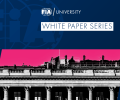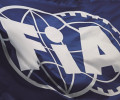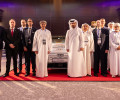Growth through collaboration, communication and regional empowerment
Focused on insights into the growth of motor sport and the advancement of safe, sustainable and accessible mobility for all in the Asia-Pacific region, the opening session of the 2025 FIA Conference in Macau stressed the importance of communication and collaboration, as well as the region’s ability to innovate solutions that address the specific issues it faces.

Moderated by FIA Chief Development Officer Habib Turki, the session first heard from Chinese Clubs..
Roberto Carlos Osorio, President of the Automobile Association Macao-China (AAMC) said that the AAMC, with 135 licensed drivers, has a strong heritage in motor sport and that by following FIA guidelines it is rapidly growing grassroots competition in the area.
“We hosted the inaugural Macau GT Cup in 2008. We also now have the Greater Bay Area GT Cup for GT4 cars. Also, in 2008, we created a Road Sport Challenge,” he said. “And today, in 2025, we are proud to announce we have now 68 cars in the region competing in the qualification race to enter the 72nd Macau Grand Prix.
“This has been achieved by following the guidelines of the FIA to promote grassroots and to create affordable races for the drivers in the region,” he added. “With drivers, teams, and promoters interested in having cutting activity in Macau, in the future, we will work more on the grassroots and the affordable races to not only support tourism, but also to be a hub of Asia for Karting international events, for champions to be selected to F4 and later in their path to Formula Regional.”
Peter Goh, CEO of the Hong Kong China Automobile Association (HKAA) highlighted the Club’s “central role in road safety, advocacy, driver's education, and motor sport development” and spoke about how HKAA is integrating the huge growth of electric mobility within its motor sport culture, including the development of electric karting and expanding Esports initiatives.
He also stressed the importance of collaboration, pointing to the lack of racing infrastructure in Hong Kong as a lever for working across borders.
“At HKAA, we are working towards establishing partnerships with motor sport facilities in cities such as Zhuhai and Guangzhou to provide Hong Kong athletes access to high quality training environments, to support cross border racing initiatives that allow Hong Kong drivers to gain experience in well-developed circuits.”
Kwong Wing Yeung, President of the Chinese Taipei Motor Sports Limited (CTMS) added that his organisation’s development is based on four pillars: communication, education, on-demand service, and cross-border collaboration. He added that the Club’s flagship Asia Auto Gymkhana Championship, co-hosted in partnership with a number of other ASNs, exemplifies CTMS’s commitment to regional inclusion and grassroots competition.
Widening the lens to regional level the session then welcomed FIA Vice President for Sport - Asia-Pacific, Lung Nien-Lee, FIA Region II President Greig Craft and FIA General Manager Alberto Villareal to the stage to give their perspective on development in the region.
Vice President Nien-Lee outlined a strategy aligned with FIA President Mohammed Ben Sulayem’s vision of doubling motor sport participation and emphasised four pillars for the region: accessibility, affordability, grassroots expansion, and community development.
“By reducing barriers and removing unnecessary bureaucracy I think we can develop strong grassroots motor sport in the region. The next step is to lower the cost of entry. It’s not expensive to do gymkhana events, to use car parks, to compete in stock production cars. We have to leverage existing resources. Lowering the cost of motor sport is key to getting people to participate.”
He also stressed the importance of working with promoters to balance commercial interests with safety and affordability.
FIA Region II President Greig Craft also focused on collaboration as a key driver of successful initiatives in road safety in the region. Pointing to a range of successful anti-drink driving programmes that he said have reached 15 million people in the region he said that all had benefited from close collaboration among Clubs in the region.
And he added that such collaborations can reach even wider.
“I had heard from Region I that they did a project in Africa of just giving reflective vests to young people,” he said. “Sounded interesting so I went to them and said, ‘look, can we share this, can we steal this idea and do it in our region?’ And they agreed. And it has proven so successful. They're reflective, but not only for kids, we now have workers, that one of the pilots was done in Vietnam. We have workers from all kinds of industrial zones. I know China, you have got so many industrial zones. But this is another opportunity that's a no brainer. Very simple, but it demonstrates how important it is to have collaboration between regions.”
Summing up, FIA General Manager Alberto Villarreal praised the region’s adaptability and encouraged Member Clubs to act on their local strengths within the FIA’s strategic framework. He highlighted the importance of autonomy in tactical execution, tailored to local contexts.
“As the FIA, we are defining the frame, we are sharing the strategy. However, each region needs to define the tactics that work best to solve its issues. I think we are able to identify common goals and it is hugely impressive how that common goal is reached in different ways in different regions. This is the power you have. No one has more knowledge than you in your Clubs.”

 Facebook
Facebook Twitter
Twitter






